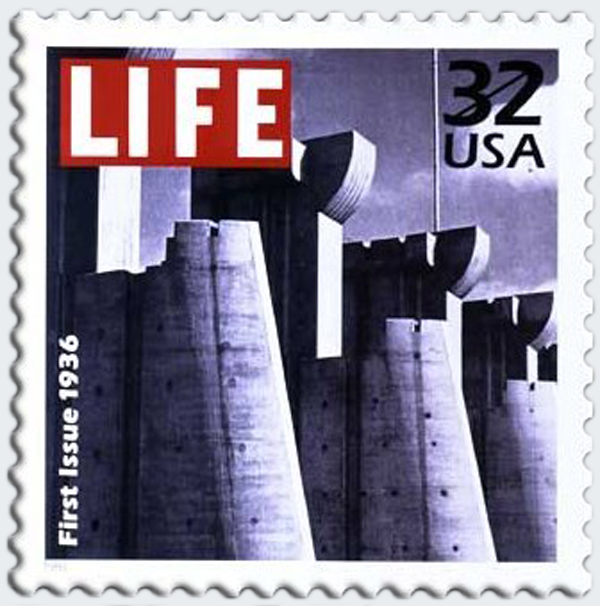
First issue of Life is published on November 23, 1936
First issue of Life is published: On November 23, 1936, the first issue of the pictorial magazine Life is published, featuring a cover photo of the Fort Peck Dam by Margaret Bourke-White.
Life actually had its start earlier in the 20th century as a different kind of magazine: a weekly humor publication, not unlike today’s The New Yorker in its use of tart cartoons, humorous pieces and cultural reporting. When the original Life folded during the Great Depression, the influential American publisher Henry Luce bought the name and re-launched the magazine as a picture-based periodical on this day in 1936. By this time, Luce had already enjoyed great success as the publisher of Time, a weekly news magazine.
From his high school days, Luce was a newsman, serving with his friend Briton Hadden as managing editors of their school newspaper. This partnership continued through their college years at Yale University, where they acted as chairmen and managing editors of the Yale Daily News, as well as after college, when Luce joined Hadden at The Baltimore News in 1921. It was during this time that Luce and Hadden came up with the idea for Time. When it launched in 1923, it was with the intention of delivering the world’s news through the eyes of the people who made it.
Whereas the original mission of Time was to tell the news, the mission of Life was to show it. In the words of Luce himself, the magazine was meant to provide a way for the American people “to see life; to see the world; to eyewitness great events … to see things thousands of miles away… to see and be amazed; to see and be instructed… to see, and to show…” Luce set the tone of the magazine with Margaret Bourke-White’s stunning cover photograph of the Fort Peck Dam, which has since become an icon of the 1930s and the great public works completed under President Franklin Roosevelt’s New Deal.
Life was an overwhelming success in its first year of publication. Almost overnight, it changed the way people looked at the world by changing the way people could look at the world. Its flourish of images painted vivid pictures in the public mind, capturing the personal and the public, and putting it on display for the world to take in. At its peak, Life had a circulation of over 8 million and it exerted considerable influence on American life in the beginning and middle of the 20th century.
With picture-heavy content as the driving force behind its popularity,the magazine suffered as television became society’s predominant means of communication. Life ceased running as a weekly publication in 1972, when it began losing audience and advertising dollars to television. In 2004, however, it resumed weekly publication as a supplement to U.S. newspapers. At its re-launch, its combined circulation was once again in the millions.
History Channel / Wikipedia / Encyclopedia Britannica /TIME - Life / Old Life Magazines
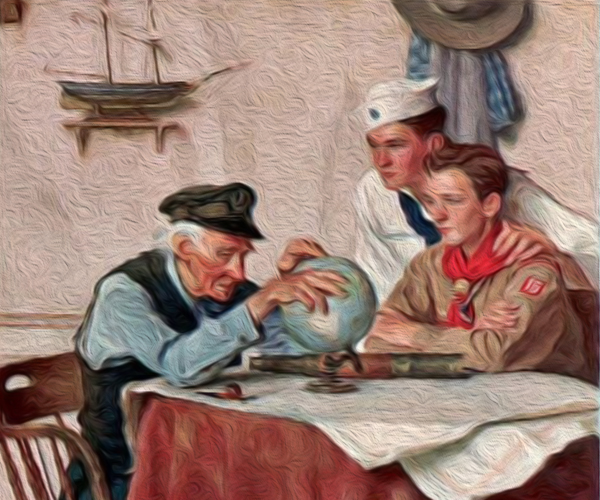
Understanding Military Terminology - Military Civic Action
(DOD) Programs and projects managed by United States forces but executed primarily by indigenous military or security forces that contribute to the economic and social development of a host nation civil society thereby enhancing the legitimacy and social standing of the host nation government and its military forces. Also called MCA.
Joint Publications (JP 3-57) Foreign Internal Defense - Defense Technical Information)
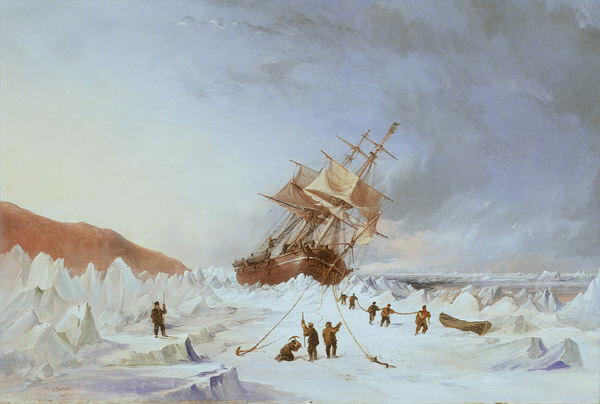
The Old Salt’s Corner
“Tales of Legendary Ghost Ships”
Legend of HMS Erebus and Terror
On May 19, 1845, two ships, HMS Erebus and HMS Terror, departed England and set sail for the Canadian Arctic. Their goal was to travel through the treacherous waters of the Northwest Passage that separated the Atlantic and Pacific oceans.
Led by Sir John Franklin, the ships were to collect samples and conduct scientific studies along the way. Out of the 134 officers and men on the expedition, not a single one ever returned.
Messages later discovered by a rescue mission indicate the ships became trapped in ice off of King William Island in the Canadian Arctic. Franklin died on June 11, 1847, and the ships were abandoned on April 22, 1848. The initial survivors attempted to cross the ice and reach safety on the Canadian mainland. [See Photos of the Lost Ship from the Franklin Expedition]
Recently, Parks Canada archaeologists found the wreck of the HMS Erebus during the 2014 Victoria Strait Expedition. (Image Credit: © Parks Canada)
CBC
/ Cool Antarctica
/ The Guardian UK
/ Live Science
/ Wikipedia

“I’m Just Sayin”
“Ninety percent of everything is crud.”
Commonly cited as “Ninety percent of everything is crap.”
~ Sturgeon's law.

“Thought for the Day”
“The best antidote I know for worry is work.
The best cure for weariness
is the challenge of helping someone
who is even more tired.
One of the great ironies of life is this:
He or she who serves
almost always benefits more
than he or she who is served.”
~ C. JoyBell C.

“What I Have Learned”
“Because power corrupts,
society’s demands for moral authority and character
increase as the importance of the position increases.”
~ John Adams
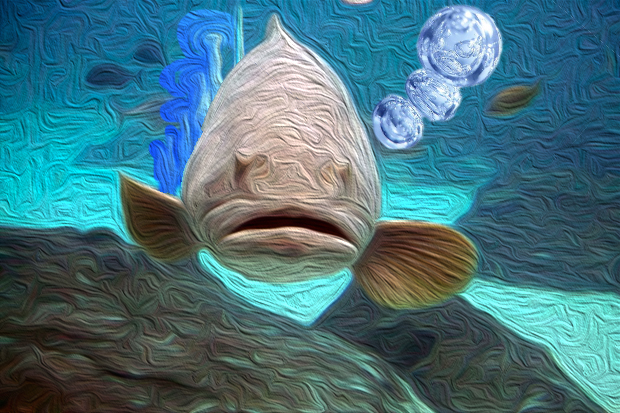
Bizarre News (we couldn’t make up stuff this good – real news story)

This 3-Year-Old Boy Dressed As Pennywise Is The Stuff Of Nightmares
A three-year-old boy in Meridian, Mississippi, loves clowning around, but it’s creeping out the internet.
Louie Tilghman has scared up lots of interest online thanks to a photo shoot that shows him dressed as Pennywise, the creepy clown from the new movie “It”, based off the Stephen King novel of the same name.
The creepy photo shoot is the brainchild of Louie’s 17-year-old brother, Eagan.
Doing elaborate photo shoots is a hobby of the elder Tilghman, who often recruits his seven younger siblings to pose for him.
Louie is an especially enthusiastic model, Eagan said:
“He loves doing all the photo shoots”, “You tell him to do his happy face and you tell him to do his mean face, and that’s the two faces he did in all the pictures.”
Huffington Post (09/06/2017) 
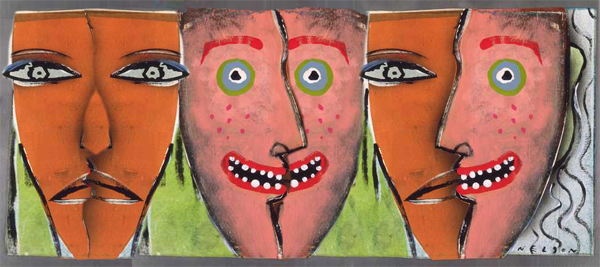
Joke of the Day
Thanksgiving Jokes
Why can't you take a turkey to church? They use FOWL language.
What kind of music did the Pilgrims like? Plymouth Rock.
If April showers bring May flowers, what do May flowers bring? Pilgrims.
Why was the Thanksgiving soup so expensive? It had 24 carrots.
What happened when the turkey got into a fight? He got the stuffing knocked out of him!
What do you get when you cross a turkey with a banjo? A turkey that can pluck itself!
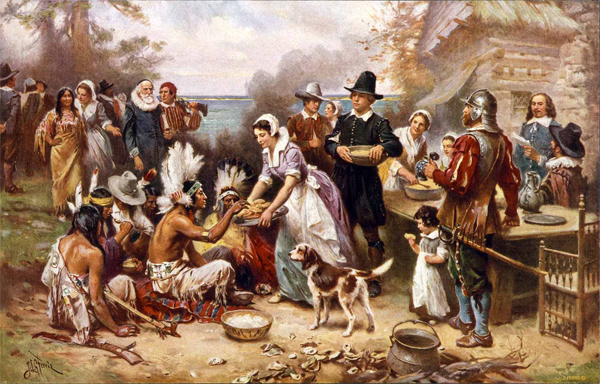
Mr. Answer Man Please Tell Us: The Origins of Thanksgiving Traditions?
There's a lot more to Thanksgiving than just the turkey and the Pilgrims. And though most celebrations will break out the cranberry sauce and pumpkin pie, there are a number of other customs that you might be less aware of (and some that are becoming too ubiquitous to miss).
THE TURKEY TROT
Many towns host brisk morning runs to lessen the guilt about the impending feast (distances and times vary from race to race, but the feel-good endorphins are universal). The oldest known Turkey Trot footrace took place in Buffalo, New York, and has been happening every year since 1896. Nearly 13,000 runners participated in the 4.97 mile race last year.
THE GREAT GOBBLER GALLOP IN CUERO, TEXAS
During their annual TurkeyFest in November, they gather a bunch of turkeys and have the “Great Gobbler Gallop”, a turkey race. It started in 1908 when a turkey dressing house opened in town. Early in November, farmers would herd their turkeys down the road toward the dressing house so the birds could be prepared for Thanksgiving. This was quite a spectacle—as many as 20,000 turkeys have been part of this “march”.
THE PRESIDENTIAL TURKEY PARDON
Since at least Harry Truman, it has been tradition for the President of the U.S. to save a couple of birds from becoming someone's feast. Some say the tradition goes all the way back to Abraham Lincoln pardoning his son's pet turkey. (Lincoln is also the President who originally declared that the holiday be held on the last Thursday of November.)
THANKSGIVING PARADES
Everyone knows about the Macy's Parade, however a more historically accurate parade, it is America's Hometown Thanksgiving Parade in Plymouth. The parade starts with a military flyover and continues with floats and costumed people taking the parade-goers from the 17th century to the present time. There are nationally recognized Drum and Bugle Corps, re-enactment units from every period of American history, and military marching units. And military bands play music honoring the men and women who serve in each branch: the Army, the Navy, the Marines, the Air Force, and the Coast Guard.
TRAVEL
One of the best things about Thanksgiving is spending time with family. Many people live far from family members and travel long distances by car, train, or plane to be with their loved ones. Thanksgiving is the busiest travel day of the year!
THE FEAST
Traditional foods are a large part of Thanksgiving celebrations. Many families include the entire family in the food preparation. Traditional foods include turkey, stuffing, gravy, sweet potatoes, cornbread, mashed potatoes, and cranberry sauce. Many people serve pie for dessert at the end of the meal. Popular pie flavors are pumpkin, pecan, sweet potato, and apple.
THE WISHBONE
Some families include breaking the turkey's wishbone as part of their celebration. The wishbone is found attached to the breast meat in the turkey's chest. After the meat has been removed and the wishbone has had a chance to become dry and brittle, two people each take one end of the bone, make a wish, and pull. Whoever ends up with the larger part of the bone gets their wish!
FOOTBALL
CBS was the first on the bandwagon when they televised their first Thanksgiving game in 1956. The first color broadcast was in 1965—the Lions vs. the Baltimore Colts. Since the 1960s, the Dallas Cowboys have joined the Lions in hosting Thanksgiving Day games, and the NFL Network now airs a third game on that night.
NATIONAL DOG SHOW
The National Dog Show is aired every year on the occasion of Thanksgiving Day following the Macy's Thanksgiving Parade. The program over the years has become America's most watched dog show.
History Channel
• National Geographic
• Quara
• Thanksgiving
• Wikipedia

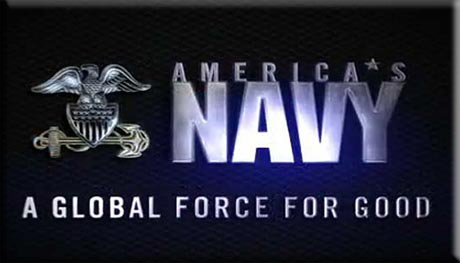
NAVSPEAK aka U.S. Navy Slang
Rack: Bed.
Rack Burns: Reddish marks seen on the face of a sailor who has just emerged from sleeping in his/her rack. Scorned upon if he/she was not supposed to be there.
Rack Hound: (derogatory but usually with a hint of envy): Sailor that spends more than his/her fair share of time in the “Rack”. Usually spoken when seeing somebody with Rack Burns. “You are such a Rack Hound!”

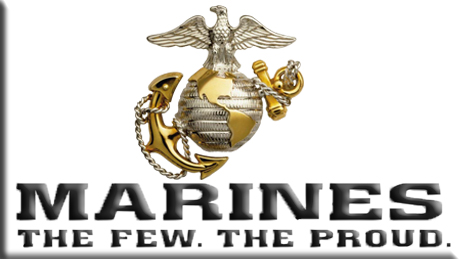
Just for you MARINE
Skivvies: Underwear: skivvie shirt (T-shirt) and skivvie drawers (underwear).
Skuzz: To wash a deck or floor with a brush or towel (skuzz rag) in place of a mop, used in Boot Camp as a method to physically toughen recruits while cleaning the squadbay.
Skylark: To casually frolic or take excess time to complete a task, from the old naval term to run up and down the rigging of a ship in sport.
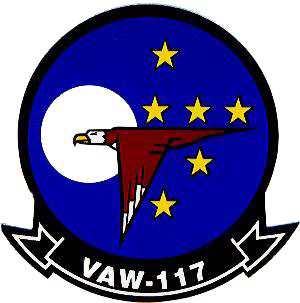
Naval Aviation Squadron Nicknames
VAW-117 - “Wallbangers”
CVW-11, Naval Air Station Point Mugu, Ventura County, near Oxnard, California - Established July 1, 1974

Where Did That Saying Come From?
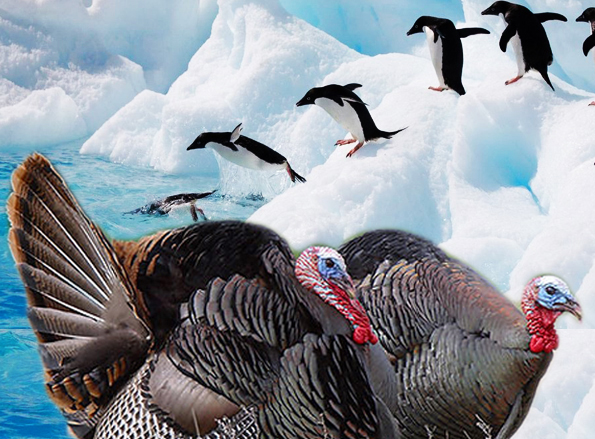
“Go Cold Turkey” Meaning: The sudden and complete withdrawal from an addictive substance and/or the physiological effects of such a withdrawal. Also, predominantly in the U.S.A., plain speaking.
Origin: The term 'cold turkey' is now predominantly used as the name of the drug withdrawal process. Also, by extension, it is used to refer to any abrupt termination of something we are accustomed to. To find the origin of the term we need to delve into the annals of American speech. Let's talk turkey.
The turkey looms large in the American psyche because of its link to early European colonists and is the centrepiece of the annual Thanksgiving meal. In the USA, and as far as I can tell nowhere else, 'plain speaking/getting down to business' is called 'talking cold turkey', which has been shortened in present day speech to just 'talking turkey'. This usage dates from the early part of the 20th century, as in this example from The Des Moines Daily News, May 1914:
“I've heard [Reverend Billy] Sunday give his 'Booze' sermon, and believe me that rascal can make tears flow out of a stone. And furthermore he talks “cold turkey”. You know what I mean - calls a spade a spade.”
The English newspaper The Daily Express introduced the phrase to an English audience in a January 1928 edition:
“She talked cold turkey about sex. 'Cold turkey' means plain truth in America.”
Phrases.org UK

Science & Technology
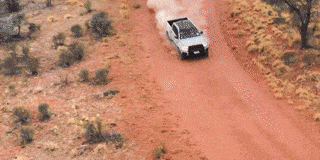
The Ford Ranger Raptor Is Real and It Can Jump - Ford finally confirmed today the existence of a hardcore off-roading Raptor version of its small truck. Now the question is whether it's coming to North America.
• Rumors Swirl That Russia Has Dropped 'Father of All Bombs'
• Secret Antarctic Ice Caves Could Hold Unknown Species
• 9 Best Desk Accessories For Staying Organized
• Star Wars' New Dreadnought Is a Better Star Destroyer—And It Still Doesn't Make Any Sense
• These Smart Doorbell Cameras Show You Who's at the Door Before You Even Answer
Popular Mechanics

The Strange, Mysterious or Downright Weird
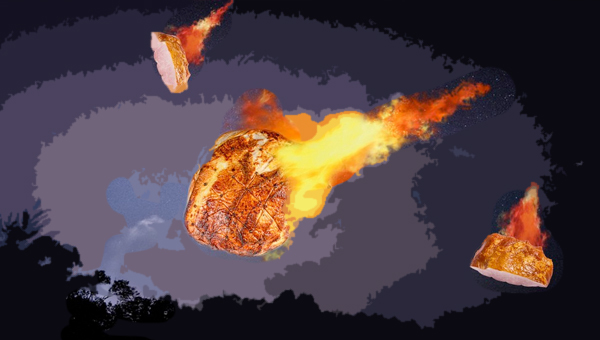
Summer technically starts on June 21, but everyone knows the season doesn't really begin until a big ol' hunk of mysterious ham falls on a roof.
On July 15, a Florida family awoke at 4 a.m. to the sound of a loud crash on their roof. The impact was apparently caused by a 15-pound frozen bag of ham and sausage.
Travis Adair, the homeowner, told WPLG Local 10 that he called the company listed on the bag of ham and they didn't have any answers as to how or why it ended up on his roof. To make matters even more strange, a delivery address on the ham bag led to a man who lives 170 miles from Adair who says he also has no idea how it ended up on a roof at 4 a.m.
So much ham, so few answers.
“We've tossed a lot of things around, you know, you've got your planes, and your sausage throwing machines... I think the only logical answer is a North Korean sausage missile”, said Adair.
Mashable (07/21/2017) 
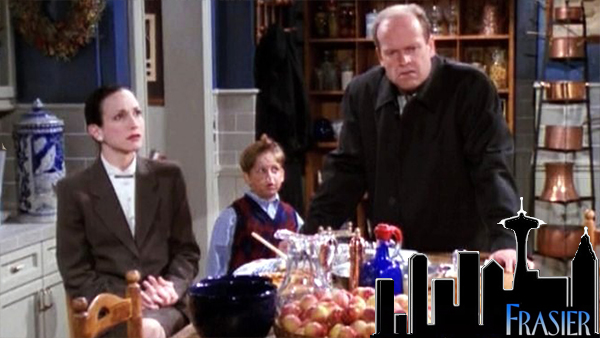
“Frasier” A Lilith Thanksgiving (1993 - 2004)
Lilith: “I'm nearly done defrosting.”
Dr.Niles Crane: “And the turkey?”
Lilith: “Might I suggest you stuff it?”
Dr.Niles Crane: “Where do you keep your saffron?”
Lilith: “Third cupboard.”
Dr.Niles Crane: “Mm-hmm, and where do you keep your shallots?”
Lilith: “In the crisper. By the way, you still have to remove the entrails from the chest cavity.”
Dr.Niles Crane: “In that case, where do you keep your ten-foot pole?”
Dr.Niles Crane: “Oh, by the way, what time tomorrow are Frederick and Lilith flying in?”
Martin: “Her broom touches down at eleven.”
Frasier Crane: “Oh yes, and by the way, I frown on overnight guests.”
Roz: “Then you're not doing it right.”
Daphne: “Where do you keep your saffron?”
Roz: “I don't know how you live with him.”
Daphne: “Huh, I don't know how you work with him.”
Roz: “Well, I have learned a trick: when he's really bugging me, I ask if he hasn't lost a little weight. Before you know it, he's checking his butt out in the glass of the candy machine.”
Daphne: “Really? I tell him he's gained weight. He skips dinner, sulks in his room, and I have the whole evening to myself.”
Frasier Crane: “I know I'm harping on and on about this, but I know you're not used to dealing with delicate flowers.”
Roz: “I've produced your show for three years, haven't I?”
Lilith: “Frasier, if you over-analyze every detail, you will rob us of the joy of the moment. It will be our wedding night all over again.”
~ “Frasier” (1993 - 2004)  Creators: David Angell, Peter Casey, David Lee
Creators: David Angell, Peter Casey, David Lee


SONG FACTS
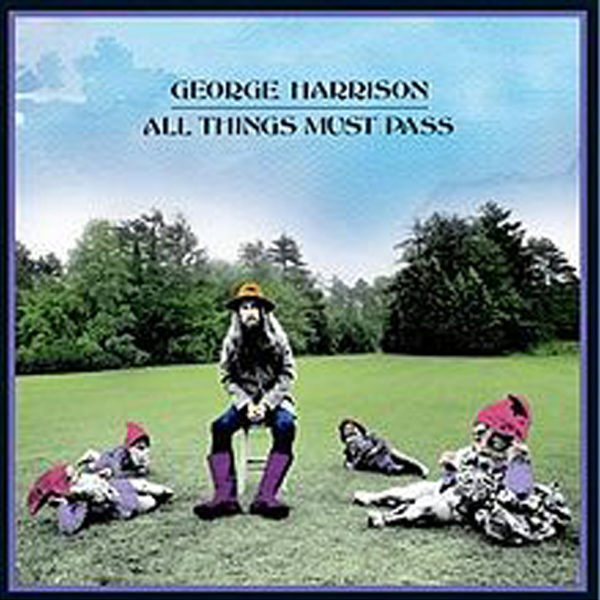
“My Sweet Lord” - George Harrison
Album: All Things Must Pass
Released 1970 
This was Harrison's first single as a solo artist, and it was his biggest hit. The song is about the Eastern religions he was studying.
Highly unusual for a hit song, Harrison repeats part of a Hindu mantra in the lyric when he sings, “Hare Krishna... Krishna, Krishna.” When set to music, this mantra is typically part of a chant, that acts as a call to the Lord. Harrison interposes it with a Christian call to faith: “Hallelujah” - he was pointing out that “Hallelujah and Hare Krishna are quite the same thing.”
In the documentary The Material World, Harrison explains: “First, it's simple. The thing about a mantra, you see... mantras are, well, they call it a mystical sound vibration encased in a syllable. It has this power within it. It's just hypnotic.”
This was recorded at Abbey Road studios using the same equipment The Beatles used. There were some familiar faces at the sessions who had contributed to Beatles albums, including John Lennon, Yoko Ono, Billy Preston and Eric Clapton. Bobby Whitlock was friends with Harrison and Clapton, and played keyboards on the album. When we spoke with Whitlock, he shared his thoughts:
“That whole session was great. George Harrison, what a wonderful man. All the time that I ever knew him, which was from 1969 to his passing, he was a wonderful man. He included everyone on everything he did because there was enough for all.”
“All during the sessions, the door would pop open and in would spring three or four or five Hare Krishnas in their white robes and shaved heads with a pony tail coming out the top. They were all painted up, throwing rose petals and distributing peanut butter cookies.”
When this song was released, the phrase “Hare Krishna” was associated with a religious group called the International Society for Krishna Consciousness, whose members would often approach passengers in airports, seeking donations and trying to solicit members. Individuals in this group became popularly known as “Hare Krishnas”, with a generally negative connotation.
Artists who record chant music often face a negative reaction from listeners who don't understand the mantras. When we spoke with Krishna Das, the leading American chant musician, he explained:
“My Sweet Lord' is very clear and very beautiful, but the problem is that English has been appropriated by Western religion and it's very hard to talk about spiritual things in a song that doesn't get too 'organized religion-y,' you know? And then you get a lot of people who have a negative reaction to that as well. You can get a lot of negativity from the organized religion people. Like, 'This isn't our Jesus. This isn't the way it is.'”
In 1976, Bright Tunes Music sued Harrison because this sounded too much like the 1963 Chiffons hit “He's So Fine”  . Bright Tunes was controlled by The Tokens, who set it up when they formed the production company that recorded “He's So Fine” - they owned the publishing rights to the song.
. Bright Tunes was controlled by The Tokens, who set it up when they formed the production company that recorded “He's So Fine” - they owned the publishing rights to the song.
During the convoluted court case, Harrison explained how he composed the song: He said that in December 1969, he was playing a show in Copenhagen, Denmark, with the group Delaney and Bonnie, whose piano player was Billy Preston (who contributed to some Beatles recordings). Harrison said that he started writing the song after a press conference when he slipped away and started playing some guitar chords around the words “Hallelujah” and “Hare Krishna”. He then brought the song to the band, who helped him work it out as he came up with lyrics. When he returned to London, Harrison worked on Billy Preston's album Encouraging Words. They recorded the song for the album, which was released on Apple Records later in 1970, and Harrison filed a copyright application for the melody, words and harmony of the song. Preston's version remained an album cut, and it was Harrison's single that was the huge hit and provoked the lawsuit, which was filed on February 10, 1971, while the song was still on the chart.
In further testimony, Harrison claimed he got the idea for “My Sweet Lord” from The Edwin Hawkins Singers' “Oh Happy Day”  , not “He's So Fine”
, not “He's So Fine”  .
.
The trial took place February 23-25, with various expert witnesses testifying. The key to the case was the musical pattern of the two songs, which were both based on two musical motifs: “G-E-D” and “G-A-C-A-C”. “He's So Fine”  repeated both motifs four times, “My Sweet Lord” repeated the first motif four times and the second motif three times. Harrison couldn't identify any other songs that used this exact pattern, and the court ruled that “the two songs are virtually identical”. And while the judge felt that Harrison did not intentionally copy “My Sweet Lord”, that was not a defense - thus Harrison was on the hook writing a similar song without knowing it.
repeated both motifs four times, “My Sweet Lord” repeated the first motif four times and the second motif three times. Harrison couldn't identify any other songs that used this exact pattern, and the court ruled that “the two songs are virtually identical”. And while the judge felt that Harrison did not intentionally copy “My Sweet Lord”, that was not a defense - thus Harrison was on the hook writing a similar song without knowing it.
Assessing damages in the case, the judge determined that “My Sweet Lord” represented 70% of the airplay of the All Things Must Pass album, and came up with a total award of about $1.6 million. However, in 1978 Allen Klein's company ABKCO purchased Bright Tunes for $587,000, which prompted Harrison to sue. In 1981, a judge decided that Klein should not profit from the judgment, and was entitled to only the $587,000 he paid for the company - all further proceeds from the case had to be remitted back to Harrison. The case dragged on until at least 1993, when various administrative matters were finally settled.
The case was a burden for Harrison, who says he tried to settle but kept getting dragged back to court by Bright Tunes. After losing the lawsuit, he became more disenfranchised with the music industry, and took some time off from recording - after his 1976 album Thirty Three & 1/3, he didn't release another until his self-titled album in 1979. He told Rolling Stone, “It's difficult to just start writing again after you've been through that. Even now when I put the radio on, every tune I hear sounds like something else.”
George Harrison, official website / Biography / Billboard / All Music / Song Facts / Ultimate Classic Rock / Wikipedia
Image: “All Things Must Pass (album)” by George Harrison
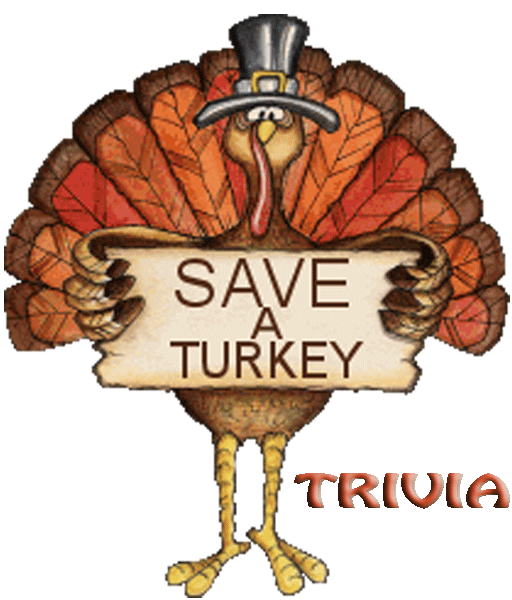
Trivia
Thanksgiving - Fact or Fiction
Fiction: In 1863, President Abraham Lincoln designated the last Thursday in November as a national day of thanksgiving. in 1939, after a request from the National Retail Dry Goods Association, President Franklin Roosevelt decreed that the holiday should always be celebrated on the fourth Thursday of the month (and never the occasional fifth, as occurred in 1939) in order to extend the holiday shopping season by a week.
Fact: In a letter to his daughter sent in 1784, Benjamin Franklin suggested that the wild turkey would be a more appropriate national symbol for the newly independent United States than the bald eagle (which had earlier been chosen by the Continental Congress). He argued that the turkey was “a much more respectable Bird”, “a true original Native of America”, and “though a little vain and silly, a Bird of Courage.»
Fiction: The Philadelphia department store Gimbel’s had sponsored a parade in 1920, but the Macy’s parade, launched four years later, soon became a Thanksgiving tradition and the standard kickoff to the holiday shopping season. The parade became ever more well-known after it featured prominently in the hit film Miracle on 34th Street (1947), which shows actual footage of the 1946 parade.
Fact: According to the Cape Cod Cranberry Growers’ Association, one of the country’s oldest farmers’ organizations, Native Americans used cranberries in a variety of foods, including “pemmican” (a nourishing, high-protein combination of crushed berries, dried deer meat and melted fat). They also used it as a medicine to treat arrow punctures and other wounds and as a dye for fabric. The Pilgrims adopted these uses for the fruit and gave it a name “craneberry” - because its drooping pink blossoms in the spring reminded them of a crane.
Fact: Turkey does contain the essential amino acid tryptophan, which is a natural sedative, but so do a lot of other foods, including chicken, beef, pork, beans and cheese. Though many people believe turkey’s tryptophan content is what makes many people feel sleepy after a big Thanksgiving meal, it is more likely the combination of fats and carbohydrates most people eat with the turkey, as well as the large amount of food (not to mention alcohol, in some cases) consumed, that makes most people feel like following their meal up with a nap.
Fiction (kind of): Domesticated turkeys (the type eaten on Thanksgiving) cannot fly, and their pace is limited to a slow walk. Female domestic turkeys, which are typically smaller and lighter than males, can move somewhat faster. Wild turkeys, on the other hand, are much smaller and more agile. They can reach speeds of up to 20-25 miles per hour on the ground and fly for short distances at speeds approaching 55 miles per hour. They also have better eyesight and hearing than their domestic counterparts.
Fact: The turkey trot, modeled on that bird’s characteristic short, jerky steps, was one of a number of popular dance styles that emerged during the late 19th and early 20th century in the United States. The two-step, a simple dance that required little to no instruction, was quickly followed by such dances as the one-step, the turkey trot, the fox trot and the bunny hug, which could all be performed to the ragtime and jazz music popular at the time.
Fiction: The American tradition of college football on Thanksgiving is pretty much as old as the sport itself. The newly formed American Intercollegiate Football Association held its first championship game on Thanksgiving Day in 1876. At the time, the sport resembled something between rugby and what we think of as football today.
A Test for People Who Know Everything
From the Jeopardy Archives Category - “THAT GAME OF THRONES GUY WITH THE BEARD” ($200):
“Oh, my sun & stars! In 2011 Jason Momoa took over this title film role from Arnold & got all barbaric.”
● Answer for People Who Do Not Know Everything, or Want to Verify Their Answer Wikipedia
From the Jeopardy Archives Category - “THAT GAME OF THRONES GUY WITH THE BEARD” ($800):
“Before he was Robert Baratheon, Mark Addy stripped away his troubles as an ex-steelworker in this 1997 movie.”
● Answer for People Who Do Not Know Everything, or Want to Verify Their Answer Wikipedia
Answer to Last Week's Test
From the Jeopardy Archives Category - “THINGS TO DO BEFORE” ($200):
“'Scorching' word for qualifying rounds in a track contest held before the main race.”
Answer: A Heat USA BMX
From the Jeopardy Archives Category - “THINGS TO DO BEFORE” ($1,000):
“During this pretrial court hearing, charges are read & the accused usually enters a plea.”
Answer: The Arraignment Massachusetts Court System



























